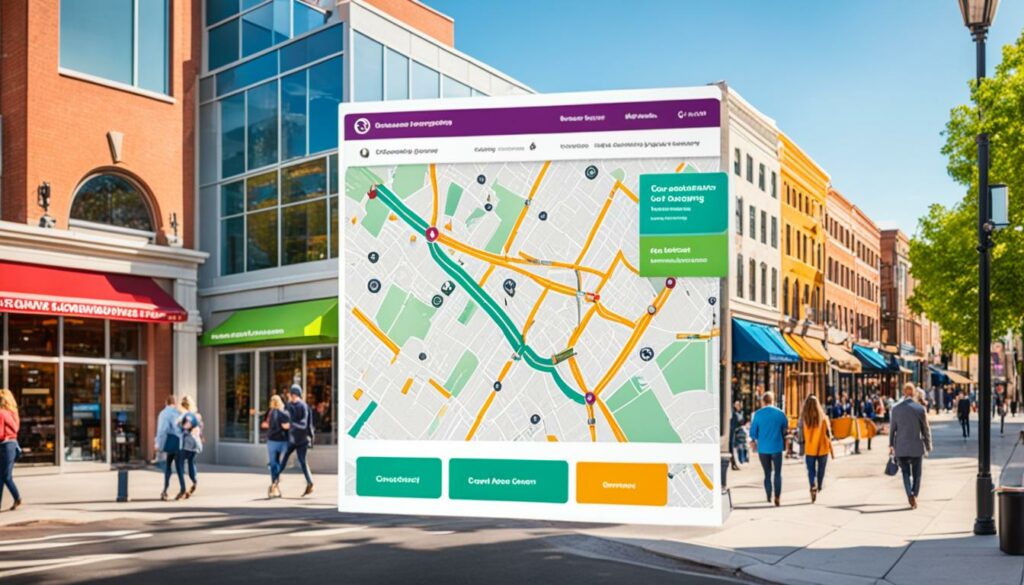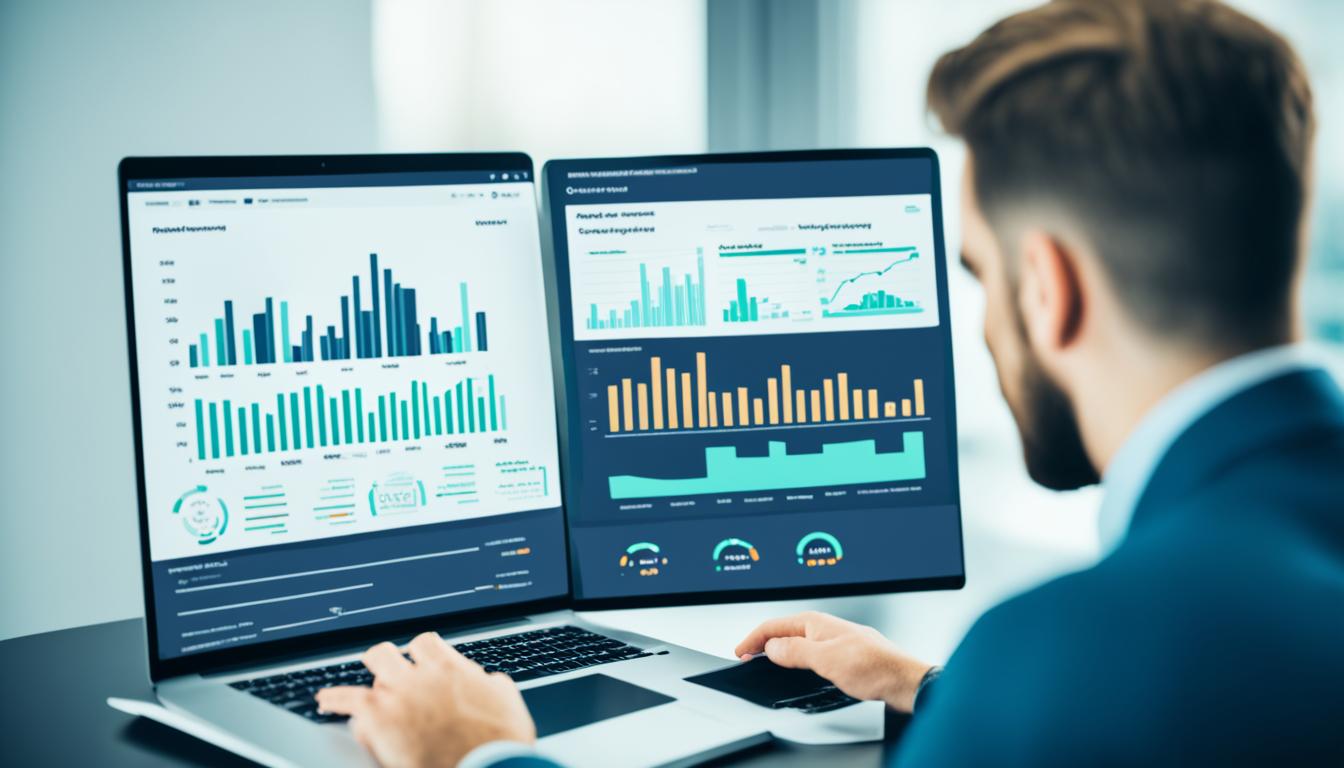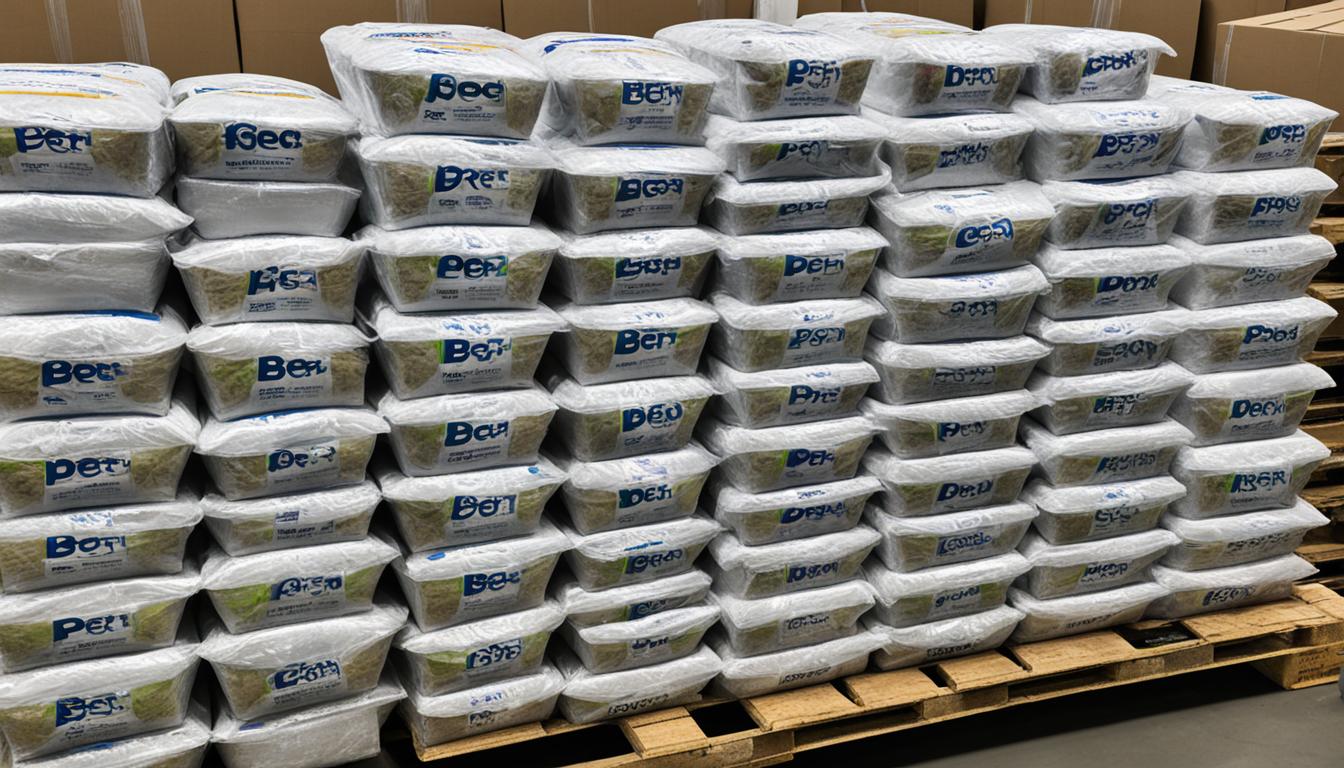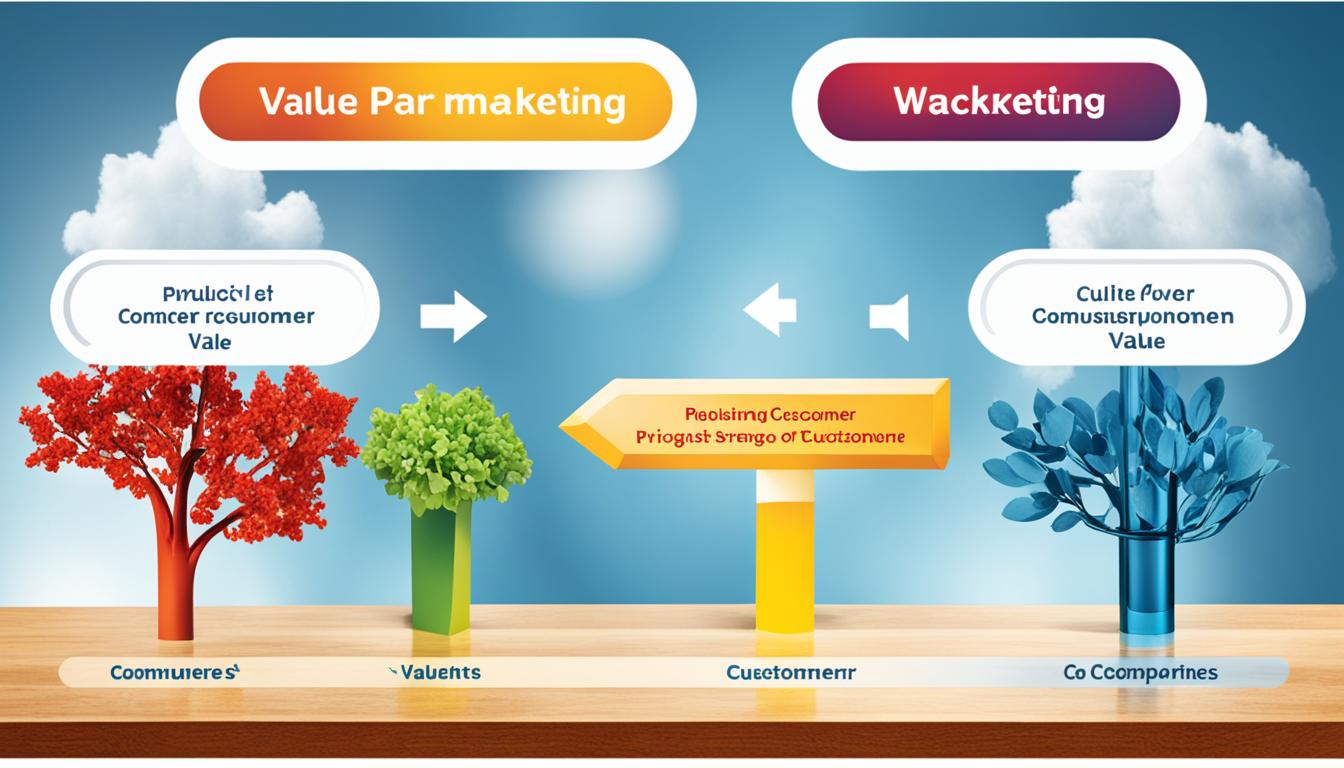Geomarketing, also known as location-based marketing or local marketing, is a strategic approach that leverages location data to target advertising and promotions to specific localities. By utilizing techniques like geotargeting and GIS marketing, businesses can ensure their marketing efforts are tailored to the needs and preferences of their target audience in a particular geographic area.
Through the use of location intelligence and spatial marketing, geomarketing enables businesses to gain insights into customer behavior and preferences based on their physical location. This valuable information allows businesses to deliver targeted marketing messages, personalized promotions, and relevant offers that resonate with their local customers.
Geolocation marketing and geographical marketing are integral to geomarketing, helping businesses effectively reach their desired audience at the right time and place. Whether it’s determining the best location for a new retail outlet, optimizing digital advertising campaigns, or enhancing customer engagement, geomarketing has proven to be a powerful tool across various industries.
To illustrate the effectiveness of geomarketing, let’s explore some real-world examples of how businesses have successfully implemented this strategy.
Key Takeaways:
- Geomarketing uses location data to target advertising and promotions to specific localities.
- It helps businesses understand customer behavior and deliver personalized marketing messages.
- Geomarketing applications include determining optimal store locations and fine-tuning digital advertising campaigns.
- Real-life examples demonstrate how geomarketing has boosted customer engagement and exceeded industry standards.
- There are various geomarketing tools and platforms available to assist businesses in implementing this strategy.
What is Geomarketing?
Geomarketing is a marketing strategy that utilizes location data to target advertising and promotions to reach consumers with relevant messaging in specific localities. By analyzing location data, businesses can understand the behavior of their target customers and effectively target their marketing efforts. This ensures that businesses are not wasting resources on promoting products or services in areas where they are not relevant or are unlikely to generate interest.
Geomarketing allows businesses to tailor their messaging and promotions to the unique characteristics of different localities. This targeted approach ensures that businesses are delivering the right message to the right audience at the right time and place. It helps businesses connect with consumers on a more personal level by delivering customized content and offers that are specific to their local context.
Utilizing Location Data
Location data plays a crucial role in geomarketing. It provides valuable insights into consumer behavior, allowing businesses to understand where their target customers are located, how they move through different localities, and what their preferences and habits are in specific geographic areas. This data can be obtained from various sources, such as mobile devices, internet searches, social media check-ins, and more.
With location data, businesses can identify patterns and trends in consumer behavior, enabling them to make informed decisions about where and how to allocate their marketing resources. By understanding the unique characteristics of different localities, businesses can tailor their messaging and promotions to resonate with the specific needs and interests of consumers in each area.
Target Advertising and Messaging
Geomarketing allows businesses to target their advertising and messaging at a local level. By analyzing location data, businesses can identify the most relevant localities to focus their marketing efforts. They can then craft advertising campaigns and messaging that specifically address the needs, preferences, and interests of consumers in those areas.
Through geomarketing, businesses can create personalized and hyper-localized marketing campaigns that resonate with consumers on a deeper level. This targeted approach increases the likelihood of capturing the attention and interest of potential customers, leading to higher conversion rates and overall marketing effectiveness.
Reaching Specific Localities
Geomarketing enables businesses to reach specific localities with their advertising and promotions. By leveraging location data, businesses can deliver their messaging to consumers who are physically located in the targeted areas. This ensures that businesses are engaging with consumers who are most likely to have a genuine interest in their products or services.
Whether it’s a retail store, restaurant, or any other local business, geomarketing allows businesses to drive foot traffic and attract customers from the surrounding areas. By reaching consumers in their immediate vicinity, businesses can capitalize on local demand and maximize their marketing ROI.
Understanding Local Customer Behavior
One of the key benefits of geomarketing is gaining insights into local customer behavior. By studying location data, businesses can understand consumer preferences, shopping habits, and other behavioral patterns specific to different localities. This knowledge enables businesses to tailor their marketing strategies to better align with the expectations and preferences of their target customers in each area.
Geomarketing helps businesses answer critical questions such as: What are the peak shopping times in a particular area? What are the popular products or services in a specific locality? How far are customers willing to travel to make a purchase? By understanding these nuanced details, businesses can make data-driven decisions to optimize their marketing efforts and provide a better customer experience.
Benefits of Geomarketing
| Benefit | Description |
|---|---|
| Enhanced Targeting | Geomarketing enables businesses to target specific localities and deliver personalized messaging to consumers in those areas, increasing the relevancy of their marketing campaigns. |
| Informed Decision-Making | By analyzing location data, businesses can gain valuable insights into consumer behavior, enabling them to make data-driven decisions about their marketing strategies. |
| Improved Marketing Effectiveness | Geomarketing ensures that businesses are reaching the right audience at the right time and place, resulting in higher response rates and a greater return on investment. |
| Greater Customer Engagement | By delivering targeted and relevant messaging, geomarketing helps businesses create a more engaging and personalized customer experience. |
Why Use Geomarketing?
Geomarketing offers a range of valuable applications in today’s highly competitive business landscape. By leveraging location-based insights, businesses can gain a deep understanding of their target customers and make data-driven decisions to optimize their marketing campaigns. Here are some key reasons why geomarketing is essential:
Determining the best location for a new retail outlet
One of the primary applications of geomarketing is identifying the optimal location for a new retail outlet. By analyzing foot traffic and consumer behavior data, businesses can select a location that maximizes their visibility, attracts their target audience, and ensures the highest potential for success.
Understanding customer behavior based on shopping habits
With geomarketing, businesses can gain valuable insights into their customers’ behavior by analyzing their shopping habits. By understanding where customers are spending their time and money, businesses can tailor their marketing strategies to effectively target their audience and deliver personalized promotions that resonate with their preferences and interests.
Fine-tuning digital advertising campaigns to specific consumer demographics
Geomarketing enables businesses to fine-tune their digital advertising campaigns by targeting specific consumer demographics. By leveraging location data, businesses can identify and target mobile phone users who are likely to be interested in their products or services. This allows for more efficient ad spend, improved marketing effectiveness, and higher conversion rates.
Geomarketing has been proven to boost the effectiveness of marketing campaigns by up to 80%. In today’s mobile-driven world, where consumers are constantly connected to their smartphones, businesses cannot afford to ignore the power of geomarketing in reaching their target customers and driving desired customer behavior.
Table: Comparison of Marketing Effectiveness with and without Geomarketing
| Marketing Effectiveness without Geomarketing | Marketing Effectiveness with Geomarketing | |
|---|---|---|
| Targeting Accuracy | Low | High |
| Conversion Rate | Low | High |
| Return on Investment (ROI) | Low | High |
| Customer Engagement | Low | High |
Geomarketing Examples
Geomarketing has proven to be a successful strategy for various industries, including restaurants, retail outlets, and charitable organizations. By utilizing targeted advertising and promotions, businesses are able to engage with their ideal customers and drive customer engagement.
Restaurant Geomarketing
One example of successful restaurant geomarketing is Outback Steakhouse. By using location targeting, Outback Steakhouse served ads to nearby potential customers, exceeding industry standards by 80%. This targeted approach ensured that the restaurant’s ads reached individuals who were more likely to visit their establishment, resulting in increased foot traffic and revenue.
Retail Geomarketing
Retail outlets have also leveraged geomarketing to effectively target their desired audience. Dunkin’ Donuts used location data to connect mobile device users with their local store. This geomarketing campaign achieved a remarkable 72% click-through rate for directions, demonstrating the power of targeted advertising in driving customer engagement and increasing store visits.
Charitable Geomarketing
Charitable organizations have also harnessed the power of geomarketing to raise funds and increase donations. Organizations like Oxfam and Movember have utilized targeted advertising and promotions to reach individuals who are more likely to be interested in supporting their cause. By focusing on specific geographic areas and engaging with potential donors through geomarketing campaigns, these organizations have been able to amplify their fundraising efforts and make a greater impact.
These examples highlight the versatility and effectiveness of geomarketing in reaching target audiences, driving customer engagement, and achieving desired outcomes for businesses across different industries.
| Business | Geomarketing Strategy | Results |
|---|---|---|
| Outback Steakhouse | Location targeting | Exceeded industry standards by 80% |
| Dunkin’ Donuts | Location data to connect mobile device users with local stores | 72% click-through rate for directions |
| Oxfam | Targeted advertising and promotions | Increase in donations and fundraising efforts |
| Movember | Geomarketing campaign to reach potential donors | Greater awareness and increased donations |
Geomarketing Tools
To implement effective geomarketing strategies, businesses can leverage a variety of powerful tools. These tools enable precise audience targeting, location targeting, weather targeting, and integration with popular marketing platforms. By utilizing these geomarketing tools, businesses can maximize the impact of their marketing campaigns and drive better results.
Audience Targeting
One key aspect of geomarketing is audience targeting. This involves identifying and reaching specific segments of the population based on factors such as behavior, purchase history, and demographics. By understanding the preferences and characteristics of their target audience, businesses can personalize their marketing messages and deliver them to the right people at the right time. This increases the relevance of their promotions and boosts customer engagement.
Location Targeting
Location targeting is another essential tool in geomarketing. It allows businesses to show ads to people who have visited specific locations within a certain time frame. This enables businesses to target customers in proximity to their physical stores or in areas that align with their target market. By reaching consumers in close proximity to their business, companies can drive foot traffic and increase sales.
Weather Targeting
Weather targeting is a unique feature of geomarketing that utilizes weather data to influence customer behavior. By leveraging weather forecasts and historical data, businesses can tailor their marketing messages and promotions to align with specific weather conditions. For example, a clothing retailer could promote raincoats or umbrellas during rainy days. By aligning marketing efforts with weather patterns, businesses can increase the likelihood of customers responding to their offers.
Integration with Marketing Platforms
Geomarketing tools often integrate seamlessly with popular marketing platforms, enabling businesses to manage their campaigns effectively. Integration with marketing platforms allows for streamlined data analysis, campaign optimization, and performance tracking. One popular geomarketing platform that offers a comprehensive set of tools for audience targeting, location targeting, weather targeting, and integration with marketing platforms is GroundTruth.
| Tool | Description |
|---|---|
| Audience Targeting | Enables businesses to reach specific segments of the population based on behavior, purchase history, and demographics. |
| Location Targeting | Allows businesses to show ads to people who have visited specific locations within a certain time frame. |
| Weather Targeting | Utilizes weather data to tailor marketing messages and promotions based on specific weather conditions. |
| Integration with Marketing Platforms | Enables businesses to seamlessly manage their geomarketing campaigns through popular marketing platforms. |
What Kind of Ads Can Be Used in Geomarketing?
Geomarketing offers a range of advertising options to effectively target specific audience segments based on their location and behavior. By utilizing these ad types, businesses can deliver personalized and relevant promotions to engage customers and drive action.
In-App Ads
In-app ads are a popular form of geomarketing advertising that reach consumers directly within mobile applications. These ads are designed to blend seamlessly with the app’s interface, providing a non-intrusive advertising experience. With in-app ads, businesses can deliver targeted messages to users based on their location and behavior, ensuring maximum relevance.
Digital Billboards
Digital billboards are another effective geomarketing ad type. These large electronic displays are strategically placed in high-traffic areas and can showcase dynamic, eye-catching advertisements. With the ability to change content in real-time, digital billboards can adapt to specific audience segments and deliver timely messages.
Push Notifications
Push notifications are notifications sent directly to a user’s mobile device from a specific app. Geomarketing makes use of push notifications to deliver tailored messages based on a user’s location. These notifications can include personalized offers, reminders, or other relevant information that encourages customer engagement.
SMS Messages
SMS messages, also known as text messages, are a widely-used communication channel. In geomarketing, businesses can leverage SMS messages to send targeted promotions or updates to customers based on their geographical location. This direct and immediate form of advertising can effectively capture customers’ attention and drive engagement.
By utilizing these geomarketing ad types, businesses can effectively reach their target audience segments with personalized and relevant advertising. The ability to deliver ads within mobile apps, on digital billboards, through push notifications, and via SMS messages allows businesses to engage customers at the right time and place, resulting in increased brand awareness, customer loyalty, and conversions.
How to Get Started with Geomarketing
Getting started with geomarketing requires careful planning and strategic implementation. By following these key steps, you can effectively launch your geomarketing campaign and maximize its impact.
Define Your Geomarketing Campaign Goals
Before diving into geomarketing, it’s important to clearly define your campaign goals. Are you looking to increase foot traffic to your physical store? Or are you aiming to drive online sales in specific regions? By setting specific and measurable goals, you can align your geomarketing efforts with your overall marketing strategy.
Consider Timing for Maximum Effect
Timing plays a crucial role in the success of your geomarketing campaign. Analyze your target audience’s behavior and preferences to determine the optimal times to deliver your personalized promotions. For example, if you’re targeting office workers, consider sending push notifications during lunch breaks or commuting hours when they are more likely to engage with their mobile devices.
Select the Right Locations
Choosing the right locations to focus on is essential for efficient geomarketing. Use data analytics and market research to identify areas with high foot traffic or a high concentration of your target audience. By targeting these locations, you can increase the effectiveness of your marketing efforts and drive more meaningful engagement.
Create Personalized Promotions
Personalization is a key driver of success in geomarketing. Leverage location data and consumer behavior insights to tailor your promotions to the preferences and needs of your target audience. For example, a retail store could offer exclusive discounts or rewards to customers who visit their store for the first time or make repeat purchases.
Implement a Comprehensive Marketing Strategy
Geomarketing should be integrated into your overall marketing strategy to ensure consistency and maximize its impact. Leverage various channels, such as mobile apps, social media, and email marketing, to reach your target audience with personalized promotions. Utilize analytics to track the performance of your geomarketing efforts and make data-driven adjustments to optimize your campaigns.
| Key Steps for Getting Started with Geomarketing |
|---|
| 1. Define your geomarketing campaign goals |
| 2. Consider timing for maximum effect |
| 3. Select the right locations |
| 4. Create personalized promotions |
| 5. Implement a comprehensive marketing strategy |
By following these steps, businesses can effectively harness the power of geomarketing to target the right people at the right place and time, driving greater customer engagement and maximizing marketing effectiveness.

Explore the Power of Geomarketing with PlotProjects
When it comes to harnessing the potential of geomarketing, PlotProjects is a leading provider of cutting-edge software solutions. Their comprehensive geomarketing platform is equipped with powerful features, such as geofencing, beacons, location-based notifications, analytics, and privacy features.
With PlotProjects, businesses can easily set up geofences and beacons to precisely target their desired audience. Geofencing allows for creating virtual boundaries and triggering notifications or marketing messages when users enter or exit specific locations. Beacons, on the other hand, utilize Bluetooth technology to deliver targeted notifications directly to users’ smartphones.
The location-based notifications feature of PlotProjects enables businesses to engage with their customers in real-time, delivering personalized messages based on their location. This provides a unique opportunity to deliver relevant promotions, offers, and updates, enhancing customer engagement and driving conversions.
PlotProjects doesn’t stop at just providing powerful geomarketing tools – their platform also offers robust analytics capabilities. Businesses can measure the effectiveness of their campaigns, gain insights into customer behavior, and make data-driven decisions to optimize their marketing strategies. With detailed analytics, businesses can track key metrics such as customer interactions, campaign performance, and conversion rates.
Privacy is a paramount concern in today’s digital landscape, and PlotProjects understands this. Their software incorporates advanced privacy features to ensure compliance with data protection regulations. Businesses can tailor the level of data collection and user consent, maintaining a balance between garnering insights and respecting user privacy.
One of the key advantages of PlotProjects is its seamless integration with multiple marketing channels. Whether businesses want to leverage social media, mobile advertising, or other digital platforms, PlotProjects provides the necessary tools and resources for a cohesive and integrated geomarketing strategy.
PlotProjects at a Glance
| Features | Benefits |
|---|---|
| Geofencing | Target users based on their geographical location |
| Beacons | Deliver personalized notifications to users’ smartphones |
| Location-based notifications | Engage customers with relevant messages in real-time |
| Analytics | Measure campaign effectiveness and gain valuable insights |
| Privacy features | Maintain data protection compliance and user trust |
| Integration | Seamlessly connect with various marketing channels |
PlotProjects empowers businesses to leverage the power of geomarketing effectively, enabling them to deliver targeted and personalized marketing campaigns. By utilizing their software, businesses can drive customer engagement, increase conversions, and ultimately achieve their marketing goals with precision.
The Benefits of Geomarketing
Geomarketing offers numerous benefits to businesses that leverage location intelligence data. By utilizing location data, businesses can reach their target audience at the right place and time, thus maximizing the relevance of their campaigns. This targeted marketing approach helps businesses achieve a higher response rate and greater customer engagement.
Implementing geomarketing strategies allows businesses to optimize their marketing efforts and create tailored promotions that resonate with their target customers. By analyzing location intelligence data, businesses can understand their customers’ behavior and preferences, enabling them to deliver personalized and targeted marketing messages. This maximizes the relevance of their campaigns, ensuring that they are reaching the right audience with the right offer.
One of the key benefits of geomarketing is the higher response rate it generates compared to traditional marketing approaches. By leveraging location data, businesses can send targeted promotions to customers when they are in close proximity to their stores or relevant points of interest. This proximity-based approach increases the likelihood of customers responding positively to the marketing messages, leading to higher conversion rates and increased sales.
Greater Customer Engagement
Another significant benefit of geomarketing is the greater customer engagement it facilitates. By delivering personalized promotions based on location, businesses can capture customers’ attention and create a stronger connection with their target audience. Geomarketing allows businesses to interact with customers in real-time, delivering relevant offers and information that meet their immediate needs.
Moreover, geomarketing enables businesses to enhance customer experience by providing location-based services and recommendations. For example, a restaurant can use geomarketing to send personalized offers and recommendations to customers in the vicinity, enticing them to visit and try their menu. This personalized and proactive approach fosters greater customer satisfaction and loyalty.
Overall, the benefits of geomarketing are clear. By harnessing the power of location intelligence data, businesses can maximize campaign relevance, target their marketing efforts more effectively, achieve higher response rates, and create greater customer engagement. Geomarketing is a valuable tool in today’s competitive market, helping businesses stand out from the crowd and drive success.

Advanced Strategies for Geomarketing
Geomarketing is a versatile tool that can be utilized in various industries and marketing strategies. By leveraging location data, businesses can enhance their e-commerce and retail marketing efforts, optimize out-of-home (OOH) advertising, and utilize social media and mobile advertising for effective audience targeting. Furthermore, geomarketing serves as a valuable asset for market research, providing insights into specific geographic areas and consumer trends.
E-commerce and Retail Marketing
Geomarketing plays a critical role in boosting e-commerce and retail marketing initiatives. By targeting specific geographic locations, businesses can increase foot traffic to physical stores and drive sales. Geomarketing allows retailers to deliver personalized promotions based on the proximity of potential customers, effectively engaging them with relevant offers. This approach leads to higher conversion rates and improved customer satisfaction.
Optimizing OOH Advertising
Geomarketing provides OOH advertisers with the ability to precisely target their desired audiences and optimize campaign locations. By analyzing location data and consumer behaviors, advertisers can strategically place their ads in high-traffic areas and deliver compelling messages to the right people at the right time. This optimization results in increased brand visibility, heightened audience reach, and a higher return on investment.
Social Media and Mobile Advertising
Social media and mobile advertising platforms offer immense opportunities for geomarketing. Businesses can re-target store visitors through social media platforms, delivering personalized ads and promotions to individuals who have shown interest in their products or services. Furthermore, geomarketing enables businesses to analyze audience behavior and engagement patterns, allowing for data-driven marketing strategies. By leveraging location data, businesses can adapt their messaging and ad placement to align with the preferences and behaviors of their target audience.
Market Research Insights
Market research is a vital component of successful marketing strategies, and geomarketing serves as a powerful tool in this aspect. By analyzing location-specific data, businesses gain insights into consumer preferences, trends, and market dynamics in specific geographic areas. Geomarketing aids businesses in identifying target markets, understanding consumer behavior, and making informed decisions to improve overall marketing effectiveness.
| Industry | Geomarketing Application |
|---|---|
| E-commerce | Targeting specific geographic locations to drive online sales |
| Retail | Increasing foot traffic to physical stores through location-based promotions |
| OOH Advertising | Precisely targeting audiences and optimizing campaign locations |
| Social Media and Mobile Advertising | Re-targeting store visitors, analyzing audience behavior, and delivering personalized ads |
| Market Research | Gaining insights into consumer preferences and market dynamics |
By implementing advanced geomarketing strategies, businesses can effectively reach their target audience, drive engagement, and achieve their marketing goals.
Conclusion
Geomarketing is a powerful marketing strategy that leverages location data to target advertising and promotions. By utilizing location-based marketing, businesses can maximize the relevance of their campaigns, resulting in higher response rates and greater customer engagement.
One of the key advantages of geomarketing is the ability to create personalized promotions based on the specific location of the target audience. This level of customization helps businesses tailor their marketing messages to resonate with consumers in a more impactful way. By understanding the applications and tools of geomarketing, companies can optimize their marketing strategies for success.
Effective implementation of geomarketing involves leveraging location intelligence data to identify the optimal target areas and timings for promotions. By using data-driven insights, businesses can ensure that their marketing efforts are directed towards the right audience at the right place and time. This targeted approach helps drive better results and ultimately contributes to the overall success of marketing campaigns.
In conclusion, geomarketing provides a valuable opportunity for businesses to enhance their marketing efforts through personalized promotions and targeted strategies. By harnessing the power of location-based marketing, companies can increase the relevance of their campaigns, effectively engage with customers, and drive the desired outcomes. Incorporating geomarketing into marketing strategies can help businesses stay ahead in the ever-evolving digital landscape.
FAQ
What is geomarketing?
Geomarketing is a form of marketing that utilizes location data to target advertising and promotions to specific localities.
Why should businesses use geomarketing?
Businesses should use geomarketing to reach consumers with relevant messaging in specific localities, understand customer behavior, and better target their marketing efforts.
What are some examples of geomarketing?
Examples of geomarketing include determining the best location for a new retail outlet, understanding customer behavior based on shopping habits, and fine-tuning digital advertising campaigns to specific consumer demographics.
What tools are available for geomarketing?
There are several geomarketing tools available, including audience targeting, location targeting, and weather targeting. GroundTruth is a popular geomarketing platform that offers these tools.
What kinds of ads can be used in geomarketing?
Geomarketing allows for a variety of ad types, including in-app ads, display ads on digital billboards, push notifications from apps, and SMS messages.
How can businesses get started with geomarketing?
To get started with geomarketing, businesses should define a goal for their campaign, consider timing to target their audience effectively, and determine the locations to focus on.
What is PlotProjects and how does it relate to geomarketing?
PlotProjects offers a comprehensive geomarketing platform that includes geofencing, beacons, and location-based notifications. Their software provides tools for setting up geofences, beacons, and targeted notifications, along with analytics to measure and refine campaigns.
What are the benefits of geomarketing?
Geomarketing offers benefits such as reaching people at the right place and time, maximizing campaign relevance, and targeting marketing efforts more effectively.
What are some advanced strategies for geomarketing?
Geomarketing can be applied to various industries and marketing strategies, including e-commerce, retail, out-of-home advertising, social media, and market research.
What is the conclusion regarding geomarketing?
Geomarketing is a powerful marketing strategy that utilizes location data to target advertising and promotions. By understanding the applications and tools of geomarketing, businesses can create personalized promotions and optimize their marketing strategies for success.








